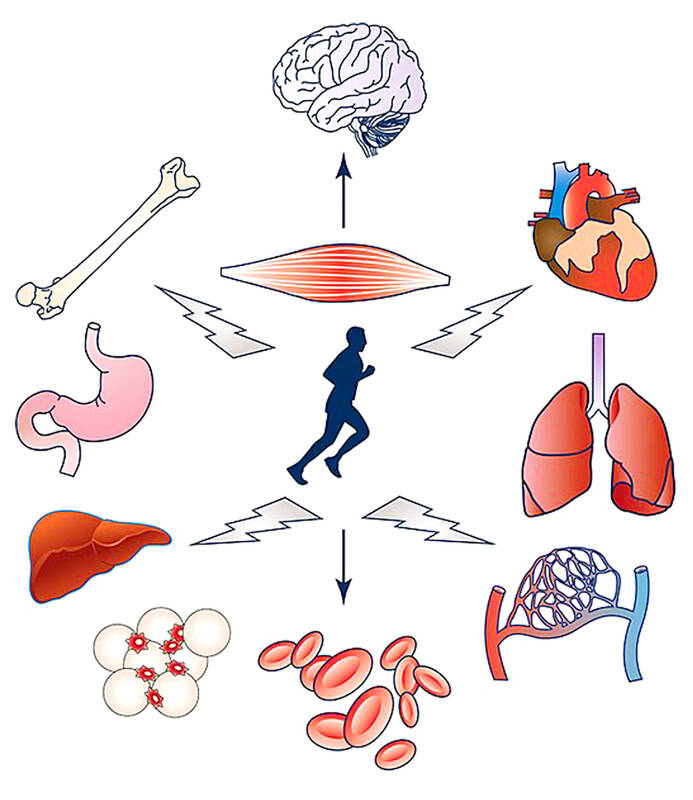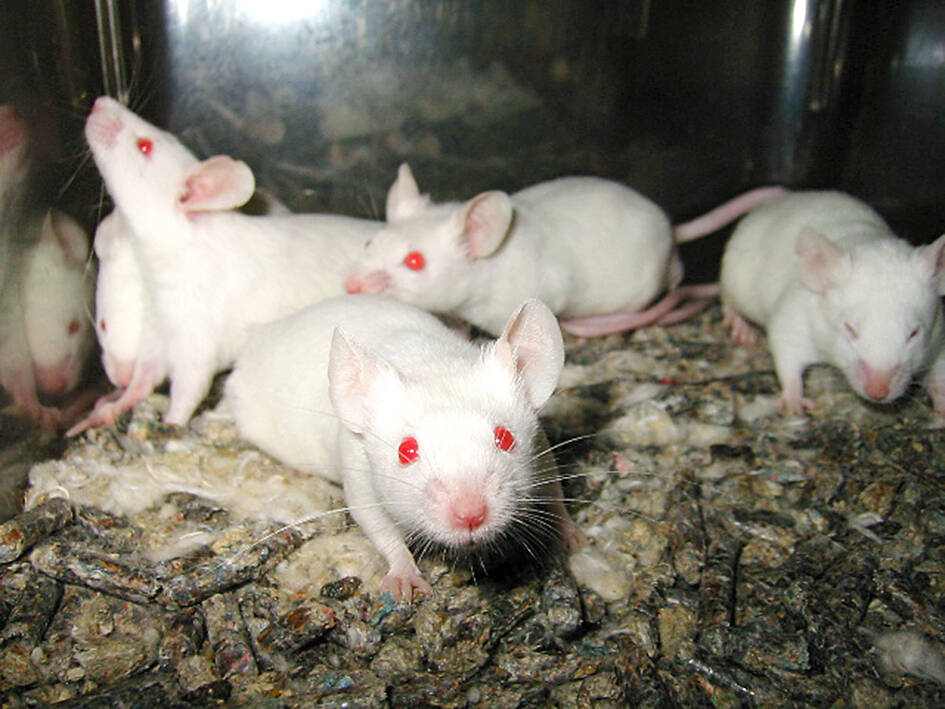In a hospital in northern Norway, just south of the Arctic Circle, a landmark experiment is taking place that could transform the way we treat aging in the years to come. Called ExPlas — exercised plasma — the clinical trial involves taking blood plasma from young and healthy adults who exercise on a regular basis and injecting it into people aged between 50 and 75 in the early stages of Alzheimer’s disease. It’s the first time this has been tested in humans.
The full results will be available next year, and the hope is that it will represent a new way of rejuvenating the minds and bodies of older people, and perhaps one day even all of us who lead largely sedentary lives.
Scientists have long known that exercise is arguably the best medicine of all. Studies have found that exercising can slash the risk of dementia by up to 45 percent, along with maintaining strong bones, supple blood vessels and muscle fibers that replenish themselves rather than fading away.

Photo courtesy of Wikimedia Commons
‘MIMETICS’
In August last year, a new study in the British Medical Journal showed that even an hour and a quarter of moderate exercise a week — half the recommended amount — reduces the risk of cancer, heart disease and premature death, compared with doing no exercise. However, despite public health guidelines, a quarter of the UK population are still classed as inactive.
One survey of more than 100 countries found that nearly a third of people do next to no exercise.

PHoto courtesy of Wikimedia Commons
But what if the drug industry could help mitigate this? From the UK to Japan, scientists have spent years searching for exercise mimetics — pills or perhaps injections that could replicate some of exercise’s beneficial effects on the body. The signs suggest we are starting to get close.
“We know that exercise releases all these hormones which show up in the blood,” says Christiane Wrann, an assistant professor of medicine at Harvard Medical School.
Because scientists are still unsure which exercise hormones are the most beneficial, the ExPlas trial is taking a broad approach. Injecting blood plasma from people who exercise regularly is a simple way of transferring all these potentially beneficial hormones to patients.

Photo courtesy of Wikimedia Commons
“The Norwegian idea is to take the plasma as the drug and give it to those who need it,” says Wrann.
But another, more focused approach is also gaining traction. In 2012, scientists discovered a hormone called irisin that is released by muscles during exercise — a messenger chemical that communicates with various parts of the body. In November last year, Wrann and her colleagues demonstrated that irisin can reach the brain and clear the toxic amyloid plaques involved in Alzheimer’s disease, a big breakthrough in understanding how exercise helps shield the brain from dementia.
Wrann and others have now created a spin-off company, Aevum Therapeutics, with the ultimate aim of commercializing irisin as the world’s first exercise-based treatment; perhaps through mimicking the hormone with a drug, tweaking genes so that they generate more irisin, or simply injecting more of it into the body.
It is too early to say whether this could represent a novel Alzheimer’s treatment or simply a broadly beneficial exercise drug, but Wrann believes that if irisin can be shown to demonstrate health benefits in clinical trials, it could lead to many more exercise-based medicines.
“[So far,] no one has successfully translated the benefits of exercise into a drug,” says Wrann. “But if you can capture, perhaps not all, but at least a significant amount of the benefits of exercise in a medication, I do think it could be transformative for improving patient outcomes.”
A PILL FOR ALL?
Could we all be released from the obligation to hit the gym in Januarys to come? Andrew Budson, professor of neurology at Boston University, agrees that the idea is a compelling one.
“I think there’s nothing inherently wrong with the idea of trying to replicate the physiologically beneficial effects of exercise,” he says. “I have no problem with that. I happen to enjoy my exercise and I don’t think that I would give it up, but on a busy day, I think it would be great to [be able to] take a drug instead of missing out on the health benefits of exercise completely.
”However, researchers such as Wrann insist that the main target group for exercise drugs is not the time-poor or the lazy, but rather disabled and elderly patients who have become housebound or bedridden through enforced inactivity. At the Tokyo Medical and Dental University, scientists have been searching for exercise’s secret ingredient — the element that protects against osteoporosis and sarcopenia (the loss of muscle mass and strength) — with the idea of turning it into a new drug for preventing frailty and perhaps even restoring the ability to move.
In autumn 2022, they announced the discovery of a chemical called locamidazole that stimulates two of the signaling pathways in the body that are activated in exercise, and are involved in the maintenance of muscle and bone. When given to mice as an oral supplement, it appeared to improve muscle width and function as well as promoting bone formation.
But while this is encouraging, researchers are largely proceeding slowly and cautiously because of the risk of unpleasant or even dangerous side-effects that have waylaid various previous attempts to turn exercise into a drug.
Jonathan Long, an assistant professor at Stanford University in California, gives the example of AMPK (adenosine monophosphate-activated protein kinase), an enzyme in the body that is activated by exercise, stimulating the clearance of excess sugars in the blood and so reducing the likelihood of type 2 diabetes. However, the AMPK system is highly complex, and activating it affects many different tissues in the body, not just blood glucose.
“People have been trying to develop AMPK activators, and a few years ago a pharma company succeeded in doing that,” says Long. “They put those molecules into monkeys and they did exactly what you would expect them to do, which is lower blood glucose. But on top of that, they also saw that those monkeys developed dilated cardiomyopathy, which means their hearts were getting too big, which is dangerous. So that wasn’t useful.”
ANTIDEPRESSANTS AND FAT JABS
The key question that Long and others are trying to answer is whether there is a safe way to artificially stimulate the body when it is at rest and not expecting exercise-related pathways to be active.
Wrann says it is unlikely that we will ever have a medicine that universally replicates the full benefits of exercise. Physical activity is simply involved in too many biological processes, and even if it were feasible to target all of them, it would probably not be safe.
“I don’t think it’s realistic that a single pill would give you the 20 things that exercise is doing to your body that are good,” she says.
Instead, scientists envisage a future with many different therapies all based on biological pathways identified from studying exercise, some for osteoporosis and others for protecting the brain. At University College London, Jonathan Roiser, a professor of neuroscience and mental health, is working on a Wellcome-funded project to measure the impact of moderate-intensity exercise on the immune system and metabolism, and how that affects mood and motivation, in unprecedented detail. One hope is that this could one day lead to a completely new class of antidepressants based on exercise.
Long is particularly interested in whether understanding the effects of exercise on the brain can yield new alternatives to existing obesity drugs. His research group has discovered a metabolite called Lac-Phe (N-lactoyl-phenylalanine) that the body produces during sprinting or resistance training. Because Lac-Phe is released into the bloodstream, it can travel to the brain, where it suppresses appetite.
“In prehistoric times, when you were exercising, you were typically running away from predators,” says Long. “Your nervous system wants to shut down digestion and appetite so all your glucose goes to your muscles to help you escape and survive.”
Lac-Phe may be a valuable new tool in the fight against the modern obesity epidemic. While the drugs Ozempic and Wegovy have emerged as the leading weight-loss treatments, Long points out that they come with limitations, particularly the requirement to inject them weekly to maintain the benefits.
“Maybe you can combine them [with Lac-Phe] in interesting ways that would allow for more durable suppression of appetite,” he says. “And maybe Lac-Phe could be developed as a molecule you can take orally rather than injecting.”
Others see mimicking exercise as a way of potentially reprogramming the body’s metabolism in ways that aid fat-burning.
Some mouse studies have shown that boosting irisin levels can convert normal fat cells into energy-burning brown fat, causing the rodents to lose weight even on a high fat diet.
For the past 20 years, Ronald Evans, a professor at the Salk Institute for Biological Studies in San Diego, California, has been studying a protein called PPAR-delta (peroxisome proliferator-activated receptor-delta), a drug target that he describes as a master switch activated through endurance exercise.
PPAR-delta can help us increase our proportion of slow-twitch muscle fibers and tells the body to go from burning sugar to fat. Now, after years of research, Evans is finally convinced that he has a drug capable of pressing this switch; what he still needs is the data to demonstrate that it is safe and efficacious in humans.
Because big funding bodies tend to be skeptical about the idea of exercise drugs, Evans has had to bill it as a potential new treatment for either fatty liver disease or the genetic muscle weakening disorder Duchenne muscular dystrophy to attract regulatory approval and funding for clinical trials.
“I hope that in the next 10 years, there is an exercise drug,” he says. “But the challenge from a scientific point of view is that all the research that gets done [in the US] is sponsored by the National Institutes of Health. And giving a drug that promotes the benefits of exercise, they say: ‘Well, what are we treating? Why don’t they just exercise?’
”But if evidence does start to emerge that such medicines are safe and work in humans, experts agree that they could be the blockbuster drugs of the future. “If we could succeed, I think absolutely,” says Long. “If we were actually able to do this, I think these would be really terrific medicines.”